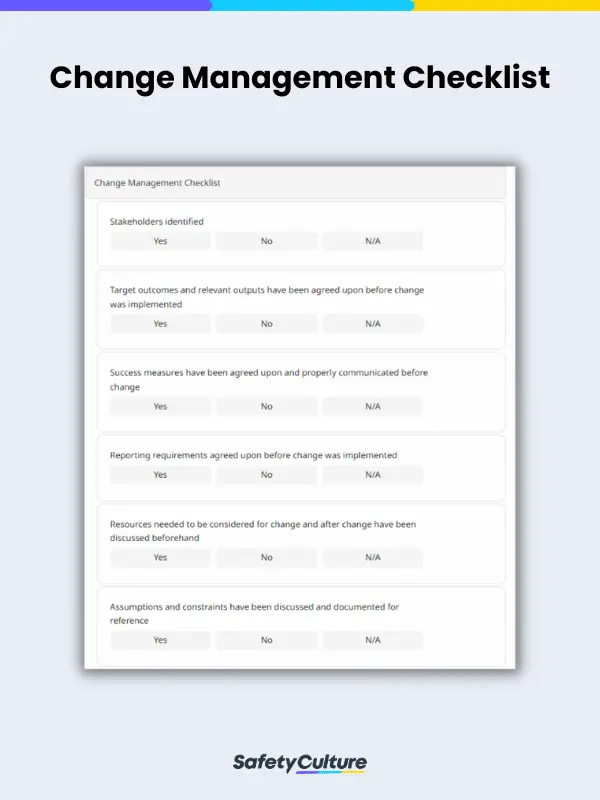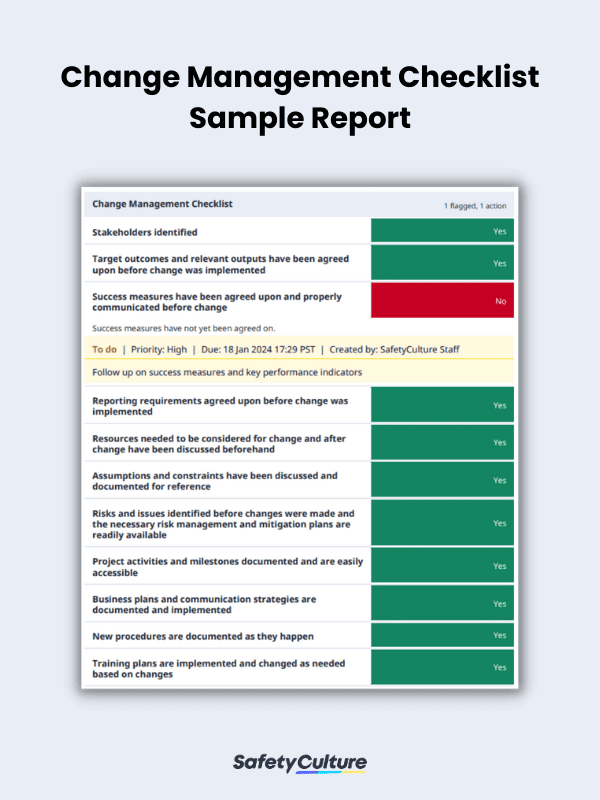What is a Change Management Checklist?
A change management checklist is a document that business owners, managers, and team leaders can use in cases where changes are expected to happen. This checklist can be used to manage changes as they happen, as well as employees’ reactions to them.
Importance and Benefits
Change management is a structured approach to transitioning individuals, teams, and organizations during a change in the organization. Typically, it involves the application of processes, tools, and techniques to manage the human side of change, thus the need for a change management checklist.
Companies undergoing transformations, whether due to technology advancements, mergers, or market shifts, must implement change management strategies to ensure a smooth transition. Having a checklist for these processes can help streamline the necessary turnovers and transitions, as all involved parties will know what to look out for and manage. With the right change management checklist for your needs, you can also better create a change management plan as needed.
A change management checklist can also help those inspecting the changes made that all is going well. It also helps ensure that all processes are standardized, such as the turnover of different items and positions along with their implementation.
Using a change management checklist also provides the following benefits:
- Planning the changes to be made and the timeline needed
- More efficient communication and engagement among workers, as the checklist will lay out all necessary procedures and steps
- Improving the overall process of changes being made by spotting issues and addressing them with the checklist
- Achieving goals set for the changes to be made and tracking the progress for them
- Ensuring compliance with internal standards and other legal requirements regarding the change
What to Include in a Change Management Checklist
Typically, a change management checklist will have fields for the following:
- Date the checklist was used
- Description of the change that will occur or has occurred
- Objective of the change
- Identification of stakeholders
- Target outcomes and success measures and if they are communicated properly
- Reporting requirements
- Ensuring the following have been communicated:
- Assumptions and constraints
- Possible risks and the management for them
- Business plans and strategies
- Training plans
- New procedures or tasks that happened or may happen but have not been discussed previously
- Date of next inspection of change, if necessary
- Signature of the person who prepared the report
Here is a change management checklist sample for reference:
FAQs about Change Management Checklists
Change management and management of change are two different terms that are often used together. “Change management” refers to the actual change happening in an organization and how its people are affected. On the other hand, “management of change” refers to how an organization goes about managing and dealing with the changes in a technical sense.
Although a change management checklist is often used for organizational purposes, it can also be used for project management. Depending on the type of project, it can be prone to changes, hence the need for a checklist to assist in transitioning or addressing them.
The upper management of any organization is the one usually responsible for using and maintaining a change management checklist and plan. In cases where a change management checklist is used for project management, it is often used by the leads.




